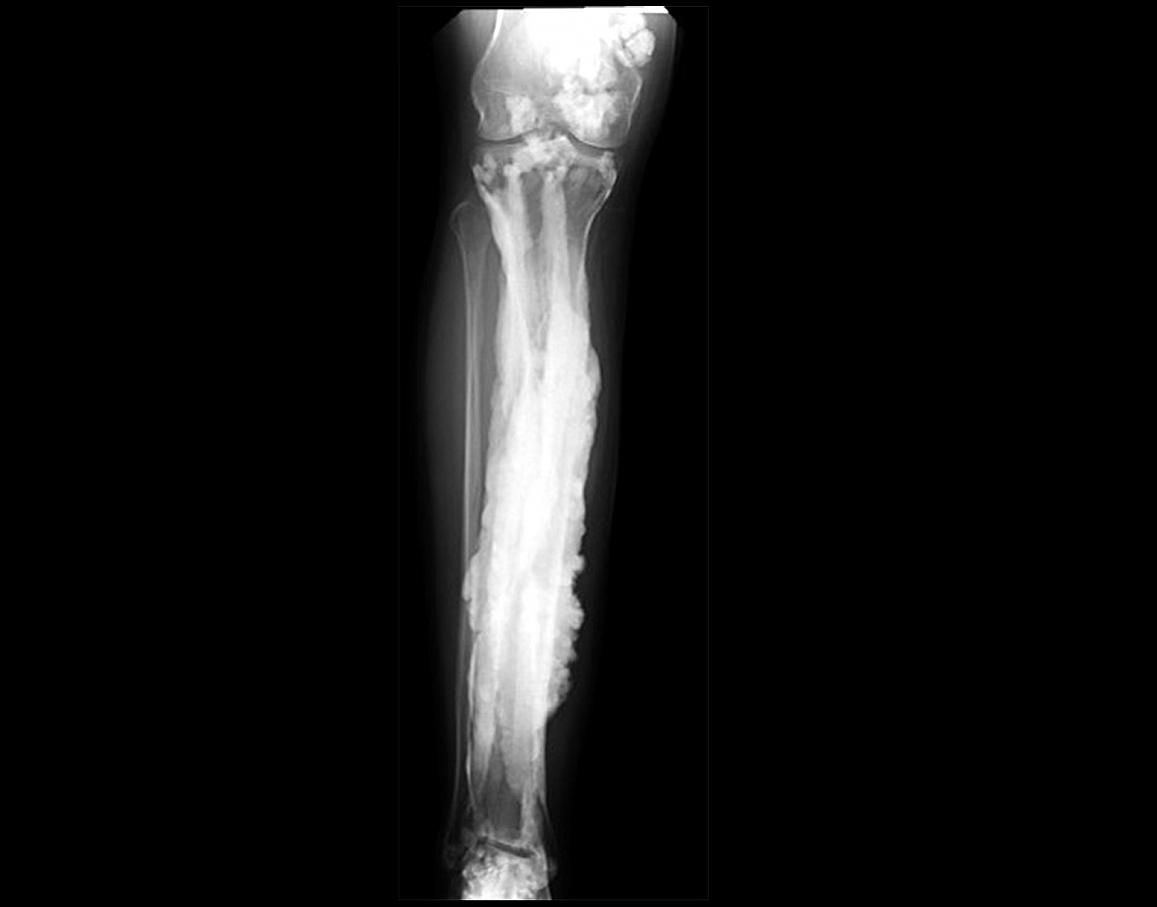IRP researchers crack mystery behind rare bone disorder
Study finds gene mutations that cause “dripping candle wax” bone disease
Researchers at the National Institutes of Health worked with 15 patients from around the world to uncover a genetic basis of “dripping candle wax” bone disease. The rare disorder, known as melorheostosis, causes excess bone formation that resembles dripping candle wax on x-rays. The results, appearing in Nature Communications, offer potential treatment targets for this rare disease, provide important clues about bone development, and may lead to insights about fracture healing and osteoporosis.
Though there are only about 400 known cases of this disorder worldwide, 15 unrelated adults with the condition from around the globe volunteered to come to the NIH Clinical Center to undergo biopsies of both affected and unaffected bones. The condition causes pain and bone deformity, which can limit the function of bones.
“Scientists previously assumed that the genetic mutations responsible for melorheostosis occurred in all cells of a person with the disorder,” said co-senior author Timothy Bhattacharyya, M.D., head of the Clinical and Investigative Orthopaedics Surgery Unit at the National Institute on Arthritis and Musculoskeletal and Skin Diseases (NIAMS) at NIH. “Our team hypothesized that mutations might only occur in the affected bone tissue.”

An x-ray image of a patient with melorheostosis shows excess bone formation, likened to dripping candle wax.
This page was last updated on Friday, January 21, 2022